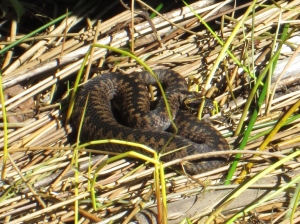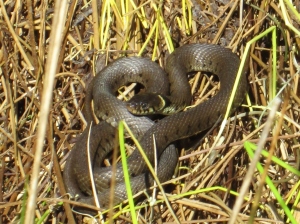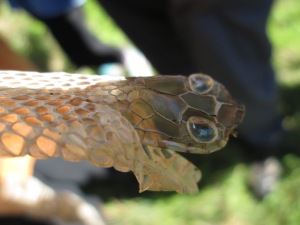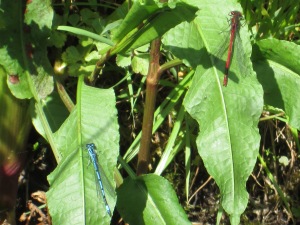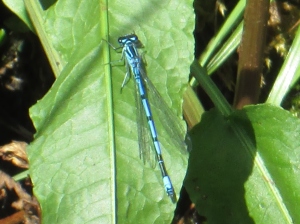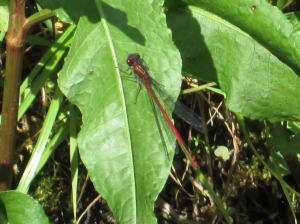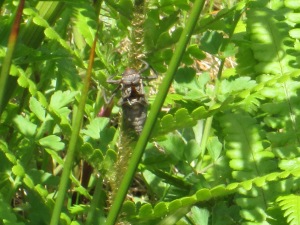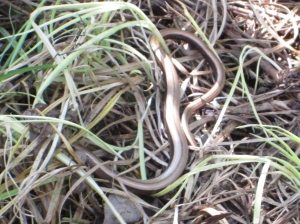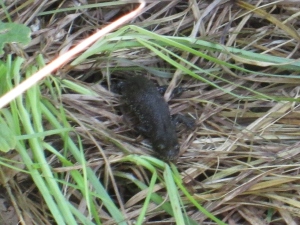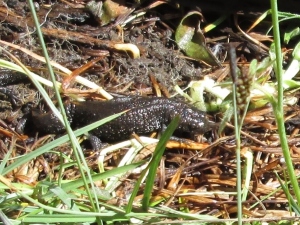I was lucky enough to go on my second ever
Reptile Ramble last Wednesday, at
Parc Slip nature reserve. Some of the pictures are a bit blurry, sorry. It was impossible to see whether they were in focus at the time, due to the strong sunlight (nothing to do with my woeful photography skills – cough, cough).
Lady’s Smock, Ox-eye daisies, Cowslips and beautiful Ragged Robin were just some of the gorgeous wild flowers we saw.
Spotted this Drinker moth caterpillar:
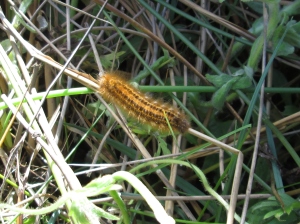
Plus this beauty, which I’ve been reliably informed (by twitter) is a Garden Tiger moth caterpillar! Glad I didn’t pick it up!
Dingy Skippers
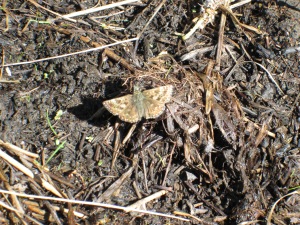
Common Blues
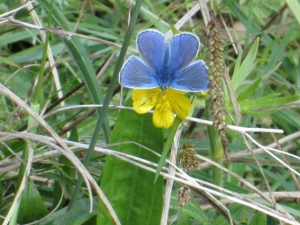
and Green-veined White butterflies were everywhere. Also saw a Small Copper, and Rose (the walk leader) pointed out some Orange Tip eggs on the underside of Lady’s smock.
We were lucky enough to see three adders, one female
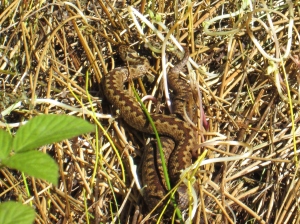
and two male.
We also saw grass snakes, one of which stayed still long enough for a photograph.
This is the shed skin of a grass snake, showing the eye scales. To find the whole skin intact is apparently quite rare, so we were extremely lucky to see it. What a fabulous face. Wish I could have kept it!
The highlight of the day for me was watching the courtship of two palmate newts in the pond. The male would swish his tale every now and then, and then shake it to waft pheromones to his beloved. She didn’t look too impressed, and we left without knowing if it ended happily ever after (hope so!). Sadly, I couldn’t get a photo of the newts, but did get these damselflies. I’ve been told they’re an azure blue and a large red.
Someone did spot a dragonfly, but I missed it :-( We did, however, spot this dragonfly exuvia (shed skin) on an emergent plant. Sorry the photo isn’t great. Just love these things and again, wish I could have taken it home. Not sure my hubby would be too happy if I did though.
This female slow worm was so well-camouflaged that we almost missed it.
Last and rarest creatures we saw were some Great Crested Newts. Feel honoured to have seen them.
To top off a wonderful morning, two ravens flew overhead, and just made my day!
Thanks again to Rose, and to all at Parc Slip nature reserve.
Karen Coles (http://kecoles.wordpress.com/)
If you would like to join us on one of our weekly Reptile Rambles, please book with Rose Revera on r.revera@welshwildlife.org or 01656 724100. Visit the
website to see available dates and more information.

















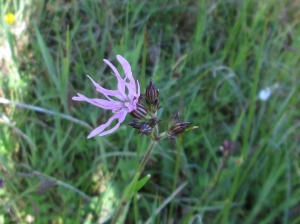

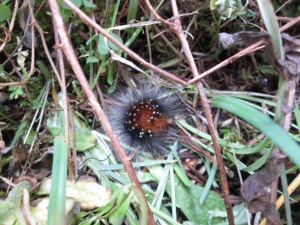
 Common Blues
Common Blues

